June is the month of weddings and brings to mind a collectible you probably never thought of—wedding cake toppers. Miniature bride and groom figurines have a lot of character and make a charming “ something old,” adding a splash of vintage to a wedding celebration or a collector’s display cabinet. They are inexpensive but unique ones can be hard to find.
The custom of a wedding cake began in ancient Rome, where wheat or barley bread was broken over the bride’s head! The bride and groom ate a few bites and then guests gathered and shared the crumbs. It was thought to bring good fortune to the newly married couple. Wedding desserts became sweeter—nuts, dried fruit and honeyed almonds morphed into sweet buns, pies and later, fruit cakes. The modern wedding cake with icing became fashionable in the 1880s. By the 1890s, cakes were topped with decorations like bells, doves, cupids, initials or bouquets of flowers, some covered by a little glass dome.
Bride and groom toppers weren’t used until the 20th century and weren’t added to many cakes before the1920s. Early toppers were made of bisque, celluloid, composition, chalk ware or a molded sugar mixture called “gum paste.” They were dressed in the latest fashions like flapper dresses in the 1920s and bouffant hair styles in the 1960s. Hemlines and necklines went up and down and skirts went from full to fitted and back again. Early grooms wore a tux with tails and a top hat and by the 1970s were hatless with long hair and ruffled shirts. During World War II, wedding cakes had plastic or all-sugar toppers with grooms dressed in soldier or sailor uniforms.
Handmade cardboard, crepe paper, or wood cake toppers are popular with collectors. Of special interest are bisque kewpie figures and “huggers” that show a couple embracing, dressed, of course, in wedding gown and tux. Wartime designs with soldier and sailor grooms, pre-1960s couples of different races, and custom made toppers that reflect careers, hobbies and individual interests are higher prized.
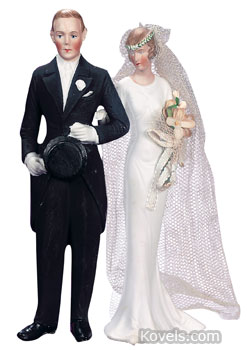
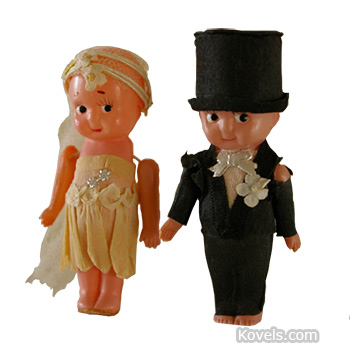
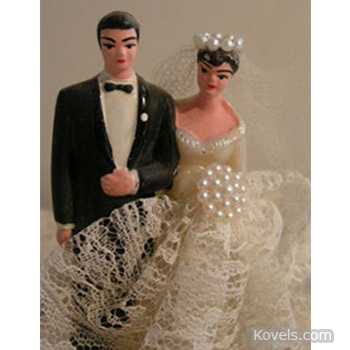
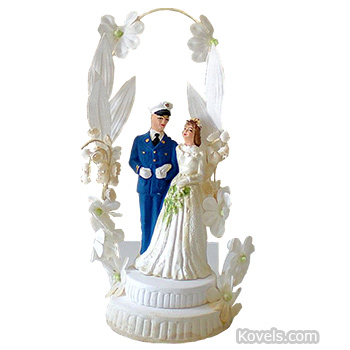
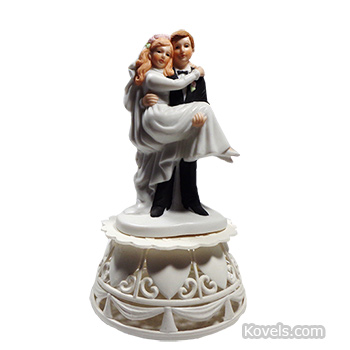



The new rage are the custom toppers made in the image and lifestyle of the couple. Very elite and pricey because they are hand made by sculptors as one of a kind. They are true collectibles and heirlooms for those special memories.